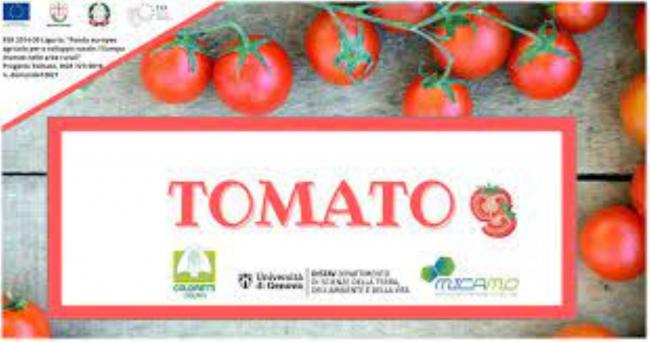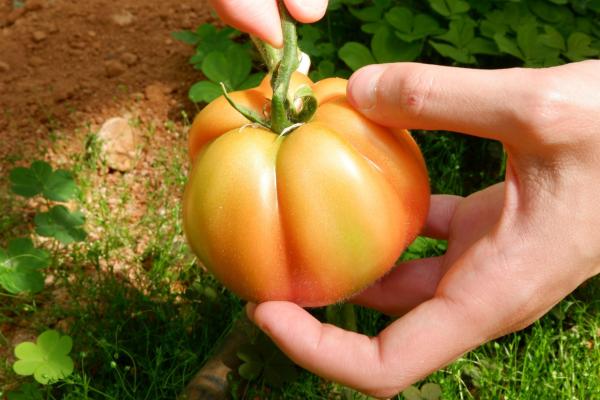TOwards a MArket of Ni-free TOmato

• Develop a methodology to select Ni-free tomatoes specifically devoted to allergic consumers.
• Provide an inventory of the positive and negative impact and costs of different growing conditions, including their influence on tomato allergenic potential.
• Review and analyse existing solutions to lower the input of water and fertilisers (and related costs) of tomato primary production.
• Limit migration and dispersion of metals in the environmental compartments by lowering the input of pesticides and ensuring a methodology to obtain Ni-free tomatoes.
1) project coordination and management
2) desk research to provide the basis for Ni-free tomato innovation
3) field survey and analyses through monitoring of identified target farms to identify agricultural practices to limit Ni uptake and to decrease input and costs while improving fruits' nutritional value
4) check on the sustainability and quality of the proposed methodological approach.
5) Product technical regulations and food security practical recommendations
6) knowledge transfer and capacity building to the agricultural SMEs involved in the TOMATO project.
7) Dissemination and communication of TOMATO results
Tomato crop is valued at 8–9G$ annually. Tomato is grown on about 5Mha with a production of 170.7 MMt worldwide, 17.6 of which in EU. Among vegetable crops of EU, tomato occupies the largest area, accounting for 11.7% of the total area used for vegetables. Tomato was the top fruit produced in EU. In 2015, Italy and Spain (36.3% and 27.4 of total EU production, respectively) supplied almost two thirds of total tomatoes production in the EU.
Tomato growers are mainly concerned about the efficient use of water (as in the WFD) to minimise the cost of irrigation water (currently 0.054-1.50 €/m), specifically in southern Europe that accounts for 75% of total water use for EU agriculture and increase the water productivity (from about 5 €/m3 for open field tomato crop to > 25 €/m3 for greenhouse soilless crop10). The high input of raw materials (e.g., P-fertilisers) and nitrogen-fertilisers and the use of pesticides to obtain an all year- long production have detrimental effect on tomato nutritional value and safety.
Tomato has several nutritional benefits, including its high content in lycopene. In most cases, tomato genotypes have been analysed from agronomic and technological point of view without considering Ni content that could increase the risk of allergies. Currently, guidelines for hypoallergenic tomato agri-food chain are missing. A new approach can provide high-value tomato for growers and consumers.
There is a need for growers to find alternative routes to improve their position in the value chain, and to become more competitive and environmental-friendly.
"Create an area of application of research data that allows the establishment of a safer and more sustainable agri-food chain for tomato growers and consumers.
The TOMATO results will have important effects on horticultural production chain that will introduce new forms of innovation and enriching/differentiating its offer.
Obtaining a product dedicated to consumers with specific needs will lead to the opening of a market attentive to primary producers and willing to recognize their efforts to obtain the desired characteristics. Limiting Ni inputs together with lowering the amount of fertilizers and pesticides through environmental-friendly growing practices and systems will certainly be appreciated by consumers.
"
Establish a new sustainable chain for products and processes that will take into account markets', growers' and consumers' needs and the existing knowledge useful to improve the primary production (e.g., sustainable agricultural practices, use of rustique genotypes, etc.). The best knowledge about relationships and reciprocal influences in soil-plant relations will enable the development of new cultivation methods environmental-friendly and resource-efficient. This will also be possible thanks to: 1) the results obtained from previous research conducted by the R&D partners involved in TOMATO; 2) the activities carried out by GO during phase 1 of measure 16.1 and 3) the analyses of field data, of cultivation techniques and cultivars used evaluating the more performing in terms of food safety and environmental and economic sustainability. This will allow to decrease the inputs of Ni, fertilizers and pesticides through highly performant growing systems and environmental-friendly agricultural practices. Environment and consumers will therefore benefit from the selection of sustainable agricultural practices (with lower production and environmental costs) by providing a product of high health value with an appropriate price.
Start a production in a specific sector (Ni-free tomato) to reuse the currently underused cultivable areas (e.g., Western Liguria) and favor the conversion of flower growing firms. TOMATO wants to contribute to the partial resolution of the significant problem of abandonment of Liguria greenhouses and agricultural lands, due above all to the crisis in the floriculture sector. The implementation in these territories of new products and new production methods, with high added value, will increase productivity and create more favorable prospects for sustainable agriculture, thus maintaining the population in rural areas and improving the competitiveness of the agricultural sector. The main objective of this project is to propose strategies to be able to address it both by public bodies, through territorial planning work, and by the owners of these greenhouses or land, identifying guidelines to implement the conversion through the use of cultivation methods and innovative crops. For this reason the involvement of the institutions is of key importance.
Documentazione del workshop Innovazione e conoscenza per l’agricoltura: le sfide del futuro per la cooperazione in Liguria
I Gruppi Operativi, Liguria, PEI-AGRI, Italia| Titolo/Descrizione | Url | Tipologia |
|---|---|---|
|
COLDIRETTI LIGURIA
|
Link ad altri siti che ospitano informazioni del progetto
|
|
|
UNIGE
|
Link ad altri siti che ospitano informazioni del progetto
|
|
|
MICAMO
|
Link ad altri siti che ospitano informazioni del progetto
|
|
|
Pagina Facebook del progetto
|
Link ad altri siti che ospitano informazioni del progetto
|
|
|
Articolo - Il progetto PSR-TOMATO “Verso un mercato del pomodoro Ni-free” – FASE CONCLUSIVA
|
Link ad altri siti che ospitano informazioni del progetto
|
|
|
Articolo su Pianeta PSR - Buono, sicuro e Ni-free: i risultati del progetto Tomato
|
Materiali utili
|

Pomodoro: metodologie colturali Ni-free
Nel corso del progetto molteplici sono stati gli interventi di monitoraggio effettuati in campo al fine di effettuare attività di mappatura dei campi e dei frutti, rispetto…
